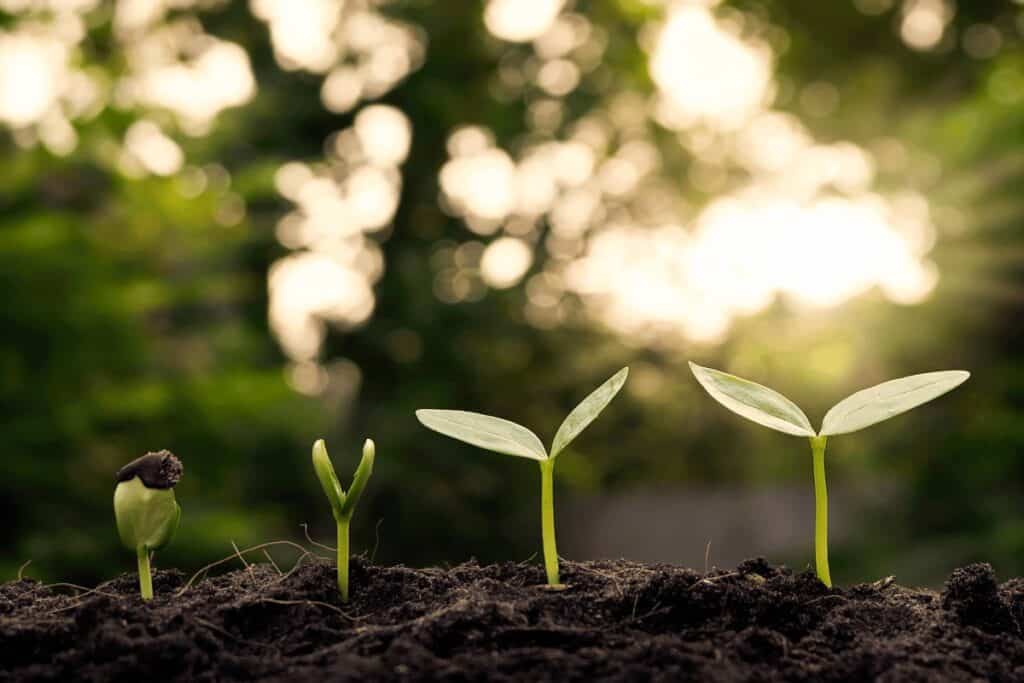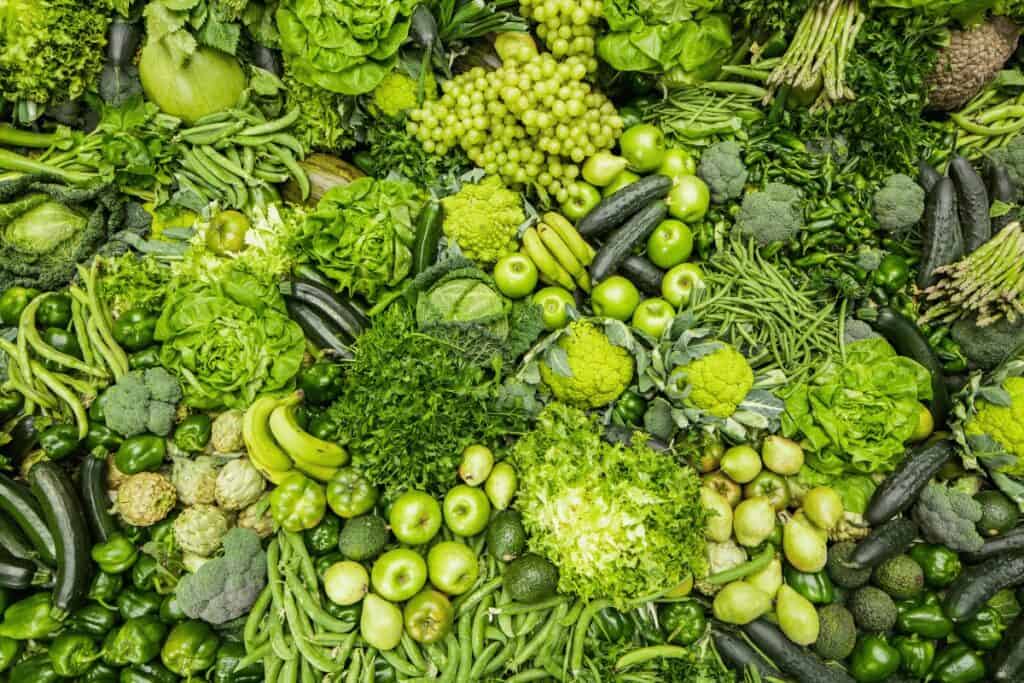Introduction ~ How to Live a Green Lifestyle

Living a green lifestyle is not only beneficial for the environment but also for your own well-being. By adopting sustainable practices, you can reduce your carbon footprint, conserve resources, and contribute to a healthier planet. In this article, we will explore 15 practical tips that can help you live a green lifestyle and make a positive impact on the world around you.
Embrace Sustainable Eating Habits: How to Live a Green Lifestyle
- Eating sustainably is an important aspect of living a green lifestyle. By making conscious choices about your food, you can minimize your environmental impact. Opt for locally sourced and organic foods whenever possible [3]. These choices support local farmers, reduce the carbon emissions associated with long-distance transportation, and promote the use of fewer pesticides and chemicals. Additionally, reducing your meat consumption can have a significant positive impact on the environment. Livestock farming contributes to deforestation, water pollution, and greenhouse gas emissions [1][2]. Consider incorporating more plant-based meals into your diet and choosing plant-rich dishes when dining out.
Minimize Food Waste: How to Live a Green Lifestyle

- Food waste is a significant issue that contributes to environmental problems. To reduce food waste, plan your meals, and buy only what you need. Properly store perishable items and use leftovers creatively to minimize waste. Composting food scraps is another great way to reduce landfill waste and create nutrient-rich soil for gardening.
Reduce Single-Use Plastics: How to Live a Green Lifestyle
- Single-use plastics, such as plastic bags and disposable water bottles, contribute to pollution and harm wildlife. Make a conscious effort to reduce your consumption of single-use plastics by opting for reusable alternatives. Carry a reusable water bottle, bring your own shopping bags, and choose products with minimal packaging.
Conserve Energy: How to Live a Green Lifestyle
- Conserving energy helps reduce greenhouse gas emissions and lowers your carbon footprint. Use energy-efficient appliances, switch to LED light bulbs, and unplug electronics when not in use. Additionally, take advantage of natural light and adjust your thermostat to conserve energy.
Practice Water Conservation:How to Live a Green Lifestyle
- Water is a precious resource, and conserving it is essential. Fix any leaks in faucets or toilets, install water-efficient fixtures, and be mindful of water usage. Take shorter showers, collect rainwater for gardening, and use a broom instead of a hose to clean outdoor areas.
Opt for Sustainable Transportation: How to Live a Green Lifestyle
- Reducing reliance on fossil fuel-based transportation is crucial for a greener future. Whenever possible, choose public transportation, carpool, bike, or walk for shorter distances. If you own a car, maintain it properly for optimal fuel efficiency and consider switching to an electric or hybrid vehicle.
Support Renewable Energy: How to Live a Green Lifestyle
- Transitioning to renewable energy sources is vital for a sustainable future. Consider installing solar panels on your property or supporting community renewable energy projects. Many utility companies also offer the option to purchase renewable energy credits to offset your electricity consumption.
Create a Sustainable Home: How to Live a Green Lifestyle
- Make your home more energy-efficient by improving insulation, sealing air leaks, and installing energy-efficient windows. Use eco-friendly cleaning products and choose furniture made from sustainable materials. Incorporate indoor plants to improve air quality and create a more natural and calming environment.
Reduce, Reuse, Recycle: How to Live a Green Lifestyle
- Follow the principles of the waste hierarchy—reduce, reuse, and recycle. Minimize waste by choosing durable and long-lasting products, repurposing items whenever possible, and recycling materials that can be processed into new products. Be mindful of proper recycling practices and dispose of hazardous waste responsibly.
Practice Mindful Consumption: How to Live a Green Lifestyle
- Before making a purchase, consider the environmental impact of the product. Choose items that are made from sustainable materials, have minimal packaging, and are produced ethically. Opt for second-hand or refurbished goods when appropriate and support local businesses and artisans.
Grow Your Own Food: How to Live a Green Lifestyle
- If you have space, start a garden and grow your own fruits, vegetables, or herbs. It not only provides you with fresh and organic products but also reduces your reliance on store-bought food, which often involves transportation and packaging.
Support Sustainable Fashion: How to Live a Green Lifestyle
- Fast fashion has a significant environmental impact. Opt for quality clothing made from sustainable materials and support ethical fashion brands. Extend the life of your clothes by repairing them or donating them to others. Consider renting or borrowing outfits for special occasions.
Practice Eco-Friendly Cleaning: How to Live a Green Lifestyle
- Traditional cleaning products often contain harmful chemicals that can be detrimental to the environment and your health. Switch to eco-friendly cleaning alternatives or make your own using natural ingredients like vinegar, baking soda, and essential oils.
Engage in Community Initiatives: How to Live a Green Lifestyle
- Join local environmental organizations, participate in community clean-up events, and support initiatives that promote sustainability. By coming together, you can make a more significant impact and inspire others to live a green lifestyle.
Educate and Inspire Others: How to Live a Green Lifestyle
- Share your knowledge and experiences with others to encourage them to embrace a green lifestyle. Talk about the importance of sustainability, share tips, and resources, and lead by example. By collectively working towards a greener future, we can create positive change.
Conclusion ~ How to Live a Green Lifestyle
Living a green lifestyle is a journey that requires commitment and continuous improvement. By implementing these sustainable tips, you can contribute to a better future for our planet and future generations. Start small, be consistent, and inspire others to join you on this transformative path.
Remember, every action counts, and together we can make a significant difference. Let’s embrace a green lifestyle and create a more sustainable world for all.
Latest Post
- What Types of Lettuces Can You Grow?

- How to Plant Onion Seeds for Maximum Germination

- How to Plant Parsnip Seeds for Maximum Germination

- How to Plant Mushroom Seeds for Maximum Germination

- How to Plant Lettuce Seeds for Maximum Germination

- How to Plant Kale Seeds: A Step-by-Step Guide to Maximum Germination Success!

FAQS
Q: What are green lifestyles?
A: Green lifestyles refer to adopting practices and making choices that minimize harm to the environment, conserve natural resources, and promote sustainability. It involves making conscious decisions in various aspects of life, such as energy consumption, waste management, transportation, and consumer choices, to reduce one’s ecological footprint.
Q: What is a green routine?
A: A green routine refers to incorporating environmentally friendly habits into your daily life. It involves adopting practices such as conserving energy and water, reducing waste, recycling, using eco-friendly products, and making sustainable choices in transportation and food consumption. Green routines help promote a more sustainable lifestyle.
On the other hand, sustainable living encompasses not only environmental considerations but also social and economic factors. It aims to meet the needs of the present generation without compromising the ability of future generations to meet their own needs. Sustainable living involves balancing environmental, social, and economic aspects to create a more sustainable and resilient society.
Q: What are the basic principles to go green?
A: The basic principles to go green include:
Reduce, reuse, recycle: Minimize waste by reducing consumption, reusing items whenever possible, and recycling materials.
Conserve energy: Reduce energy consumption by using energy-efficient appliances, turning off lights when not in use, and using renewable energy sources.
Save water: Practice water conservation by fixing leaks, using water-efficient fixtures, and minimizing water usage.
Choose sustainable transportation: Opt for public transportation, carpooling, cycling, or walking whenever possible to reduce emissions from fossil fuel-powered vehicles.
Buy eco-friendly products: Choose products that are made from sustainable materials, have minimal packaging, and are produced using environmentally friendly practices.
Support local and organic: Purchase locally grown or organic food to reduce carbon emissions from long-distance transportation and support sustainable farming practices.
Plant trees and green spaces: Contribute to reforestation efforts and create green spaces to enhance biodiversity and mitigate climate change.
Educate and raise awareness: Share knowledge about green living with others to encourage wider adoption of sustainable practices.
Q: What are the three parts of sustainable living?
Q: What are the three parts of sustainable living? A: Sustainable living consists of three interconnected parts:
Environmental sustainability: This aspect focuses on minimizing harm to the environment, conserving natural resources, and reducing pollution. It involves practices such as energy efficiency, waste reduction, and conservation of ecosystems.
Social sustainability: Social sustainability involves creating equitable and inclusive communities that prioritize social well-being, justice, and equality. It encompasses aspects such as access to education, healthcare, affordable housing, and social cohesion.
Economic sustainability: Economic sustainability emphasizes the responsible use of resources and the development of sustainable economic systems. It involves promoting fair trade, supporting local economies, and pursuing sustainable business practices that consider long-term impacts on both the environment and society.
Q: What does healthy living green mean?
A: Healthy living green refers to adopting a lifestyle that promotes both personal well-being and environmental sustainability. It involves making choices that prioritize health and wellness while minimizing negative impacts on the environment. This can include activities such as consuming organic and locally sourced food, engaging in physical exercise, reducing exposure to toxins, and connecting with nature.
Reference:




